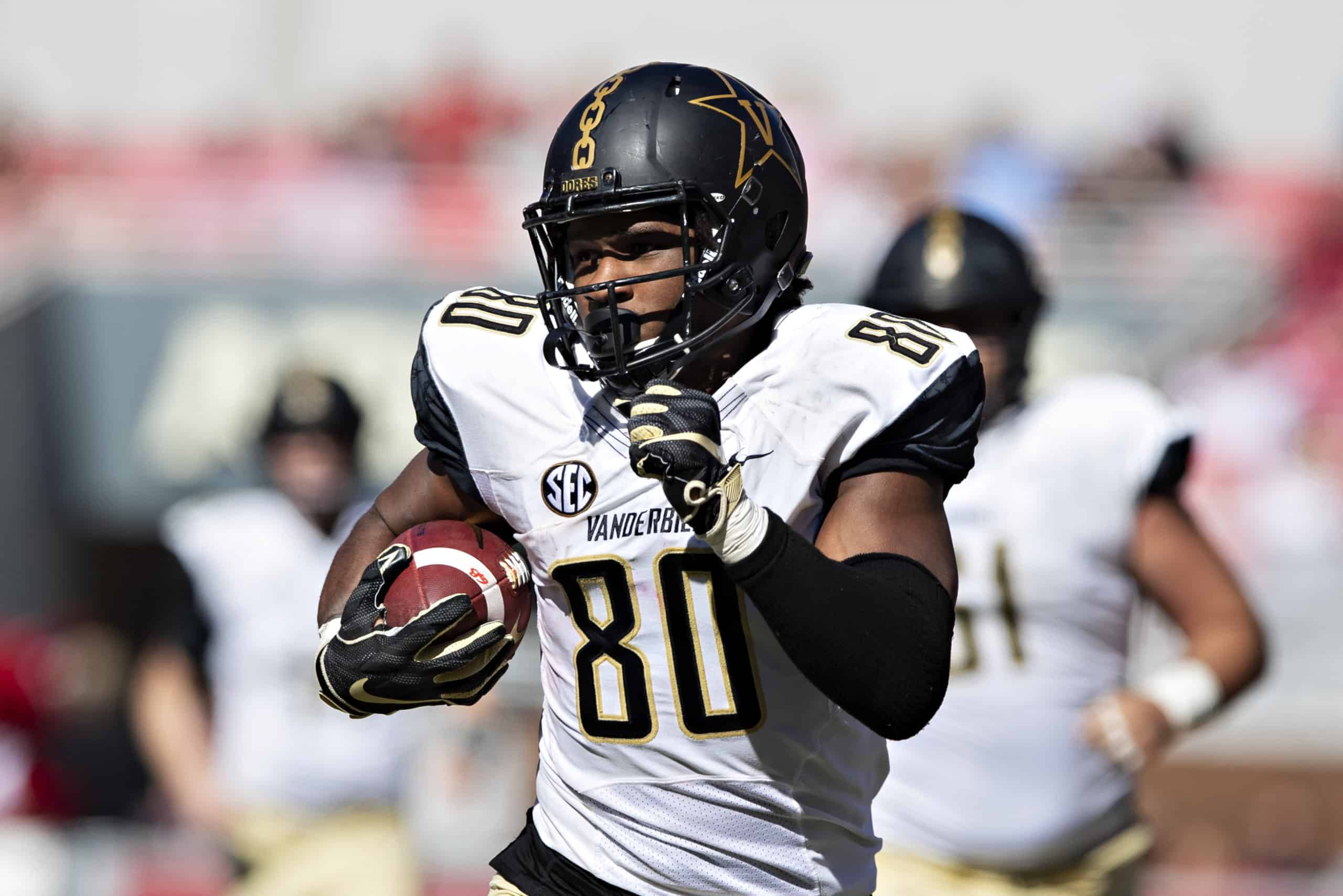Sports Info Solutions (SIS) brings you the second annual edition of The SIS Football Rookie Handbook, with scouting reports and statistical breakdowns on over 280 college football players who are likely to be drafted or signed as rookie free agents in 2020 (a glossary for the below stats can be found here). New features for this year include unique and informative NFL team pages, research deep-dives by the SIS R&D team, and—for the first time ever—the NCAA version of their flagship football statistic, Total Points.
Continuing our position-by-position preview of this year’s draft class, we shift our focus to tight ends. As a scouting staff, we use common terminology to grade every trait that we evaluate. We use a 1-9 scale with a 1 representing a “Reject” grade and a 9 meaning a “Rare” grade for whatever trait we are evaluating. We spend a lot of time in our internal Scout School making sure that our scales are calibrated with one another, and this common scale and set of language is a key aspect to ensuring that our evaluations are consistent (that…and cross-checks).
Additionally, for each position in the book, there are positional grading scales. As opposed to grading traits, these scales apply to stacking the final grades for each prospect. The final tight end scale is as follows:
| Grade | Description |
|---|---|
| 9.0-7.0 | High-end 3 down starter. Pro Bowl level. |
| 6.9-6.7 | 3 down starter with “Y” and “H” ability. |
| 6.6-6.5 | Lower-end starter with “Y” or “H” ability. |
| 6.1-6.0 | Developmental. Top traits but needs time. |
| 5.9 | Backup with “Y” and “H” ability. |
| 5.8 | Backup with “Y” or “H” ability. |
| 5.7 | 3rd TE (special teams ability desired). |
The ‘Y' is the traditional TE who is usually aligned in a three-point stance alongside the OT and is required to have ability as an in-line blocker, while the ‘H' is generally a more athletic TE with less blocking ability who will commonly align in the slot or backfield.
Jared Pinkney: TE Rank 1 of 21 | Final Grade: 6.7
Report by Nathan Cooper
One Liner
Pinkney has soft hands and the catch radius to make receptions in traffic and at any body position, but will need to improve his ability to avoid contact during his routes and overall blocking ability to prove he can be a solid starter at the next level.
Overall
Pinkney is a Y-tight end who played in-line and split out in Vanderbilt’s pro-style, RPO-based offense. He started 39 of the 50 games he played in for the Commodores. He suffered a leg injury in the 2015 season-opener and missed the entire season. He’s a good athlete who has a thick, strong build. He competes and plays with toughness on every play, especially when the ball is in his hands or a potential big play is waiting to happen.
Pass Game
In the pass game, Pinkney shows flashes of all-around ability. His receiving ability stands out as he creates mismatches and uses his soft hands to pluck the ball out of the air. He possesses the concentration and ball skills to make catches at a variety of different angles and body positions while being able to make catches in traffic. His large catch radius allows him to make catches outside of his frame and help his quarterback out when he’s not on target. He runs good, not incredibly crisp routes and uses his off-hand to create some separation, but rarely avoids contact mid-route and will get re-routed often. He plays fast, but lacks a burst or second gear. However, once he gets the ball in his hands, he turns into a running back running hard and is tough to bring down. He’s able to release off the LOS relatively easily, but will almost always take a false step, making him a tick slower out of his stance than he should be. While blocking, he does a good job moving his feet to mirror defenders, but plays a bit too upright and lacks the upper-body strength to fully recover from awkward body positions to secure the block.
Run Game
In the running game, he was used a lot as a split zone blocker. Most of the time he merely just gets in the way of the defender and doesn’t really try to do much to sustain the edge. He’s shown improvement in his run blocking from 2018 to 2019 and has done a better job moving his feet to get his head across defenders on down blocks and drive his legs at the point of attack. At the 2nd level, he tends to have a tough time getting into good position against linebackers. When split out and asked to block on the edge, he competes and latches on with good leg drive and finish.
Last Word
Pinkney projects as a starting Y-tight end at the next level. His receiving ability suggests he fits best as an H, but his improved blocking ability will allow him to play in-line and block as needed. On 3rd downs, he will be utilized as a mismatch target against linebackers or smaller defensive backs. He has some special teams value and should contribute some, but won’t be looked at as a core player on those units.
| Strengths | Weaknesses |
|---|---|
| Soft hands with plucking ability | Inconsistent hand use as a blocker |
| Runs hard after the catch | Stops feet at the POA |
| Shows some mismatch ability | Gets re-routed often |
Critical Factors
















